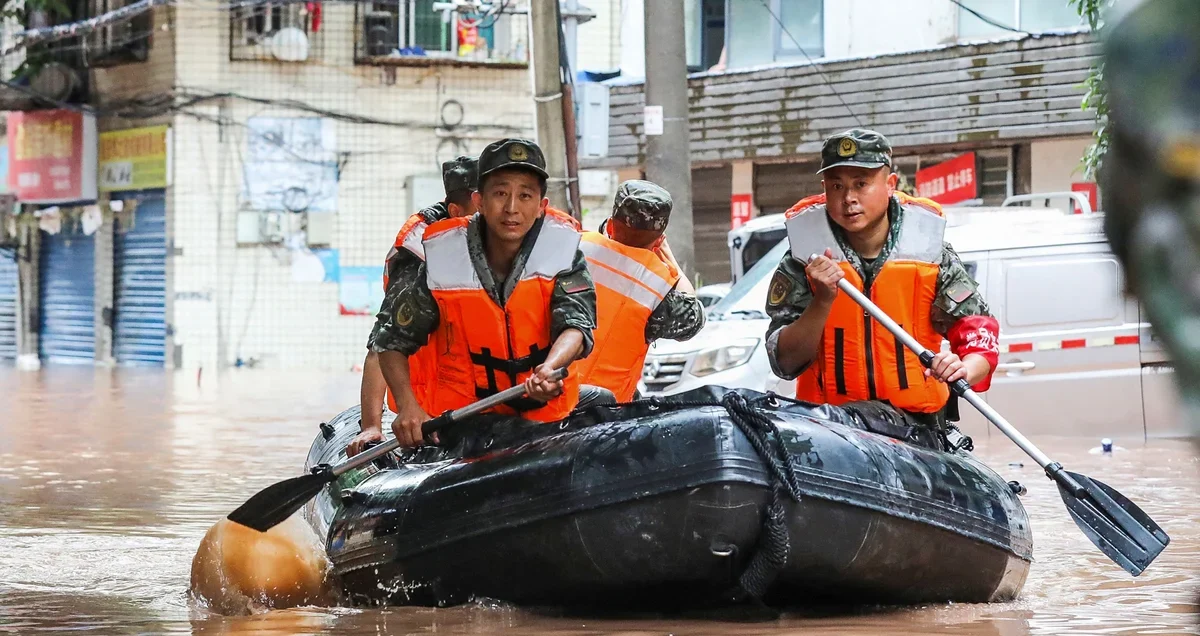Floods have shaped China’s history for centuries, carving rivers, influencing dynasties, displacing millions, and repeatedly testing the resilience of its people and government. The keyword “China floods” is not merely an annual headline—it’s a story that intertwines geography, climate change, infrastructure challenges, and the human spirit.
A Land Shaped by Water
China’s vast territory is home to some of the world’s most significant river systems: the Yangtze, Yellow, and Pearl Rivers are lifelines for hundreds of millions. But they are also sources of devastation when the monsoon rains come. Every summer, torrential downpours turn these mighty rivers into threats, swelling them beyond their banks, flooding cities, submerging farmlands, and triggering deadly landslides.
Historically, the Yellow River earned the grim nickname “China’s Sorrow.” For millennia, it shifted course, burst dikes, and caused catastrophic floods that sometimes claimed hundreds of thousands of lives. The 1931 China floods are among the deadliest natural disasters ever recorded, with estimates suggesting up to four million deaths from flooding and the ensuing famine and disease.
The Modern Face of China Floods
In modern times, floods remain one of China’s greatest natural hazards despite massive investments in dams, levees, and reservoirs. The Three Gorges Dam on the Yangtze River is the world’s largest hydroelectric dam and was constructed partly to control flooding. However, the dam alone cannot offset extreme weather events amplified by climate change.
In 2020, record rainfall led to some of the worst flooding in decades. More than 50 million people were affected across 27 provinces, with economic losses exceeding $20 billion. The Yangtze River basin saw entire towns submerged. The massive rainfall strained reservoirs and dikes, pushing the flood control system to its limits.
Climate Change: A Growing Factor
The link between China floods and global climate change is increasingly evident. Warmer temperatures intensify the East Asian monsoon, resulting in heavier and less predictable rainfall. Moreover, rapid urbanization compounds the problem. As cities expand and wetlands disappear, drainage systems often cannot handle sudden downpours, turning streets into rivers within hours.
The floods in Zhengzhou, Henan Province, in July 2021 shocked the world. In just three days, the city received more rain than it typically gets in an entire year. Subway tunnels flooded, trapping passengers for hours. Cars were swept away. The tragedy exposed gaps in urban planning and emergency preparedness for extreme weather.
Economic Toll and Displacement
Beyond the immediate human toll—deaths, injuries, and missing persons—China floods inflict massive economic damage. Farmland is submerged, destroying crops at critical harvest times. Factories halt operations. Roads and railways wash away, disrupting supply chains in the world’s second-largest economy.
Rural areas often bear the brunt, but megacities are increasingly at risk too. Shanghai, a low-lying coastal hub, faces threats from both river flooding and typhoons. Rising sea levels further complicate flood management for coastal provinces.
Millions are forced to relocate—some temporarily, some permanently. Flood-induced migration is a growing concern for policymakers. It exacerbates social issues like unemployment and strains urban housing markets.
Flood Control: Progress and Challenges
China’s approach to mitigating floods has evolved dramatically. Ancient rulers built dikes and canals; modern governments have scaled that up to massive dams, advanced levees, and an elaborate network of flood diversion zones. Technologies like weather satellites, predictive modeling, and real-time monitoring play vital roles in early warnings.
The country has also launched “sponge city” initiatives, retrofitting urban areas with permeable pavements, green roofs, and expanded drainage to absorb excess rainwater. These projects aim to mimic natural hydrological processes lost to concrete sprawl.
However, critics argue that engineering solutions alone cannot fully control the scale of China floods in the era of climate extremes. Some experts call for a paradigm shift—working with nature instead of against it. Restoring wetlands and allowing rivers to overflow in designated areas can reduce pressure on populated regions.

The Human Spirit: Stories Amid the Deluge
Behind the numbers and infrastructure debates are countless human stories of courage and solidarity. Each flood season brings images of rescue teams wading through waist-high waters, volunteers forming human chains to carry children to safety, and farmers salvaging what they can from inundated fields.
Community resilience is a defining feature of how China copes with floods. Local governments mobilize vast resources to evacuate residents. Neighbors shelter each other. Aid organizations deliver food, water, and medical care to displaced families.
However, recurring floods also raise difficult questions: How do you rebuild lives when you must abandon your home again and again? How do local economies recover when flood damage resets progress year after year?
Looking Ahead: A Call for Sustainable Adaptation
Experts agree that China floods will continue to challenge the nation in the coming decades. The government’s 14th Five-Year Plan acknowledges the need for improved climate adaptation, more resilient infrastructure, and greener cities.
But engineering must be paired with long-term ecological solutions and better urban planning. Some cities are experimenting with relocating residents away from high-risk floodplains. Farmers are offered incentives to restore wetlands and plant forests to improve water retention.
On the global stage, China’s experience is a cautionary tale and a valuable case study. As the climate crisis intensifies, other countries facing monsoon floods—such as India, Bangladesh, and parts of Southeast Asia—can learn from China’s mistakes and successes.
Conclusion
The story of China floods is a reminder that nature, when unleashed, respects no boundary or modern invention. While the country has made remarkable strides in flood control, the reality of climate change means that adaptation is a moving target.
For China, the task is not just about building higher dams and stronger levees but about harmonizing with its rivers, rethinking urban design, and helping vulnerable communities become more resilient.
Every summer, when the rains come and rivers swell, the legacy of China floods reminds the world that water—giver of life—can just as easily take it away. And in that delicate balance, the future of millions hangs.


